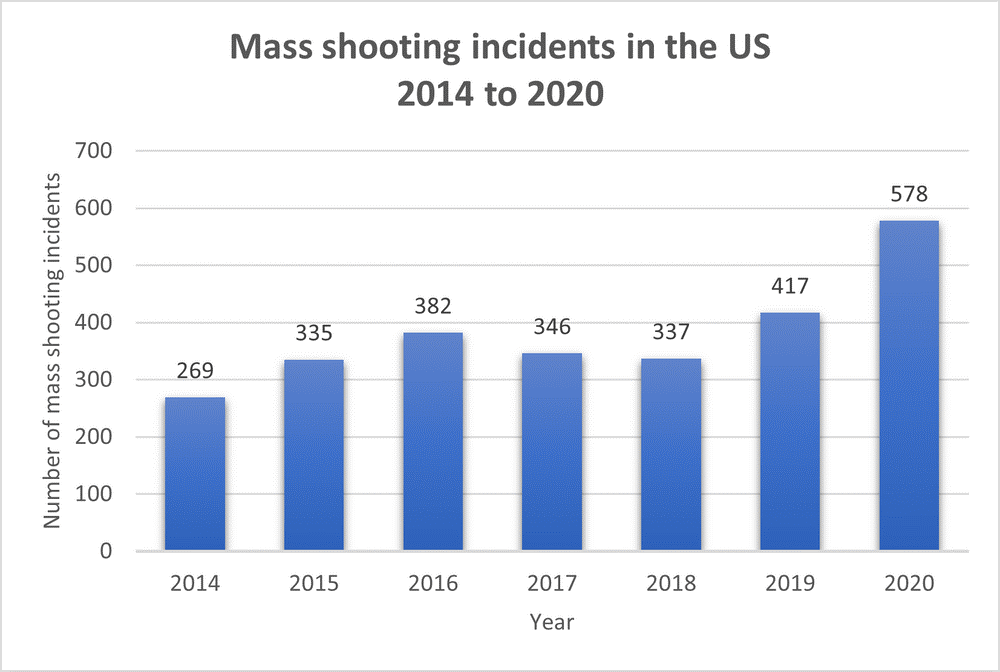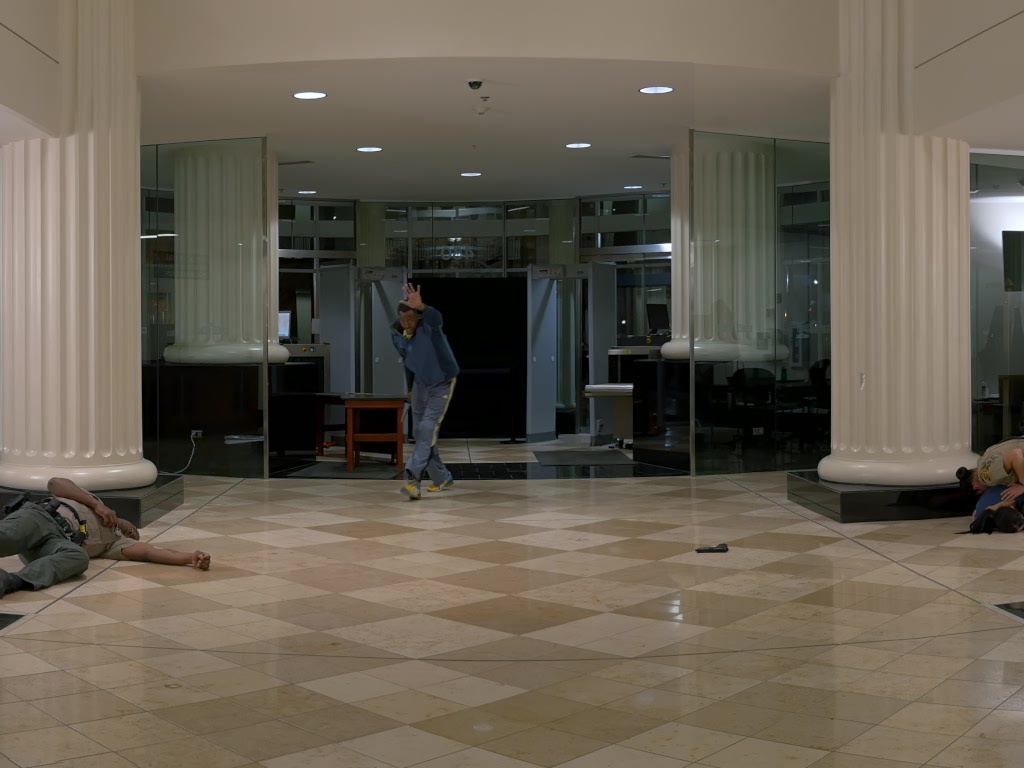
“Active shooter” or “active threat” are simple phrases for events that can take multiple forms. This includes the type of attack – sometimes it is not a “shooter” at all, but a bomb detonation or a vehicle targeting a group. In the Columbine Massacre, there were two shooters who also set up bombs (which thankfully were not detonated).
The location is a factor that varies significantly. People tend think of schools or places of worship when discussing an active threat, but businesses and medical buildings have been targeted. It is typically in a crowded area with a steady flow of possible victims, but not always. The attacker could be targeting a specific group of people – whether it is a religious group they disagree with, or a former workplace.
Because of all the varying factors, police officers should be prepared for multiple situations. It is not always easy to gather role players or borrow space in the local mall to conduct drills. VirTra’s scenarios allow you to respond to more than one active threat situation all within your agency’s training room.
Midnight Madness: Movie Theater
Most of us remember the movie theater shooting in Aurora, CO in 2012. With 82 victims – 12 of which were killed – it is a horrific event that is remembered by first responders and American citizens alike. This event inspired VirTra to create a scenario from the after-action reports where officers must respond to an active shooter roaming through a movie theater.
What makes this scenario so immersive per our agencies is the way it helps with split second decision-making. As the officer makes his/her way in the direction of the shooter, other innocent victims are running away, sometimes quickly popping out from inside showing rooms. If you are being overly reactionary, you may accidentally target one of them instead of the perpetrator.
Courthouse Crisis
As its name suggests, this scenario is in a Superior courthouse where security has been breached and multiple shooters are outstanding. Despite their tight security efforts, courthouses have been targeted before. One example is the 2005 shooting at the Fulton County Courthouse in Atlanta, GA. Like the scenario, he also overpowered a security guard. In this scenario, you can apprehend the perpetrator – in Fulton County, the attacker was on the run for a few days before his capture.
What makes this scenario unique is how it reinforces officers’ need to keep an eye out for multiple threats. As we have seen, it is not always a single person. Another important factor is that this scenario – like nearly all VirTra’s others – does not have just one option where you “shoot the bad guy.” Officers can practice negotiation techniques that, if effective, may cause the suspect to surrender or release a hostage.
Mad Bomber Multi-Incident Scenario
As previously mentioned, active threats are not always “shooters” but can also involve IEDs. Sometimes hostages are involved too. In the “Mad Bomber” scenario, a disgruntled office worker has a bomb strapped to his chest and is holding several other individuals hostage. He threatens to blow up the building, but there are many times where the subject expresses his emotions and state of mind.
Despite the bomb’s switch in his hand, there are opportunities where the officer in the scenario can de-escalate the subject. While lethal force is an option, there are many teaching points regarding hostage negotiation and crisis communication within this scenario.
The law enforcement multi-incident interactive scenarios discussed above are just a small sampling of what is available. Depending on the VirTra system you own, there are numerous options with varying teaching pain points. VirTra recommends checking the Customer V-RC Portal for the updated scenario master list.
Additionally, there are three different courses focused on active threats: “ATAK: Active Threat / Active Killer” has three modules that are NCP-certified by IADLEST. Instructors can provide 11.25 total hours of coursework that has been thoroughly reviewed and can be used in tandem with the simulator. Like all V-VICTA® coursework, these courses are free to all current customers. You can learn more here.
If you would like to incorporate simulation training into your agency’s regimen, contact a specialist.
The Federal Bureau of Investigation (FBI) has labeled and identified 277 incidents of an “active shooter” between 2000 and 2018. These terrible incidents resulted in 2,430 casualties—884 people killed and 1,546 wounded—not counting the shooters.
Unfortunately, this number continues to rise. The year 2018 held 27 incidents, 213 casualties, 2 law enforcement personnel killed and 6 law enforcement officers wounded.
But in 2019, the numbers rose to 28 incidents, 247 casualties, 2 law enforcement personnel killed and 15 law enforcement personnel wounded. In addition, the number of incidents meeting the “mass killing” definition rose, as did the number of shooters wearing body armor and the total number of shooters.
Switching gears from incidents of an active shooter to mass shooting incidents, the number has also sharply increased over the years. The infographic below uses information from the Gun Violence Archive, which defines mass shootings as “a minimum of four victims shot (either fatally or not) excluding any shooter killed or injured in the attack.”

In just the past six years, the number of identified mass shooting incidents has almost doubled. And despite the pandemic, lockdowns and increased personal security, 2020 has been the highest number of mass shooting incidents.
What this means to departments everywhere: active shooter events are on the rise, so must also be officer training and preparedness. Though eliminating the number of active shooter events is the ultimate goal, officers everywhere must also be heavily trained on this topic, should it happen in their community.
Over the course of the last few years, departments everywhere have begun implementing a wide variety of techniques designed to prepare officers for active shooter situations. While many of these training solutions are beneficial, VirTra would like to introduce the most immersive, skill-transferring and certified active shooter training solution.
The V-300 Immersive Simulator
The V-300® is a highly realistic, 5-screen simulator that immerses the officer in the chosen scenario. A combination of high-resolution visuals and surround sound help increase the physical and psychological fidelity of the situation, making an officer’s responses similar to the same incident in the field. Instructors can select from one of the many active shooter scenarios, allowing officers to practice and transfer skills learned in the classroom to the simulator—then ultimately to the field.
For example, watch this video as officers enter a real VirTra Active Threat/Active Killer scenario from its latest release of V-VICTA curriculum and immediately take necessary steps to mitigate: view here.
By combining stress inoculation, rapid decision-making and tactical firearms training, officers receive a higher quality training that cannot be replicated by other training simulator “solutions”, lectures or even role-playing. In the case of Active Threat/Active Killers, VirTra also offers certified curriculum to supplement classroom learning before officers step into the simulator.
Active Threat/ Active Killer Curriculum
V-VICTA™ curriculum—Virtual Interactive Coursework Training Academy—comes free with all law enforcement simulators. Each curriculum is developed exclusively with nationally-recognized partners, maximizes training time and is nationally-certified.
As such, the Active Threat/Active Killer curriculum was critically reviewed by members of IADLEST and passed the rigors of their independent review process. This presents instructors with training hours and pre-packaged classroom curriculum and corresponding simulator scenarios to teach, train, test and sustain all officers.
Prepare your officers to the best of your abilities. For more information on integrating Active Threat/Active Shooter (ATAK) curriculum in your department, contact a VirTra specialist.







